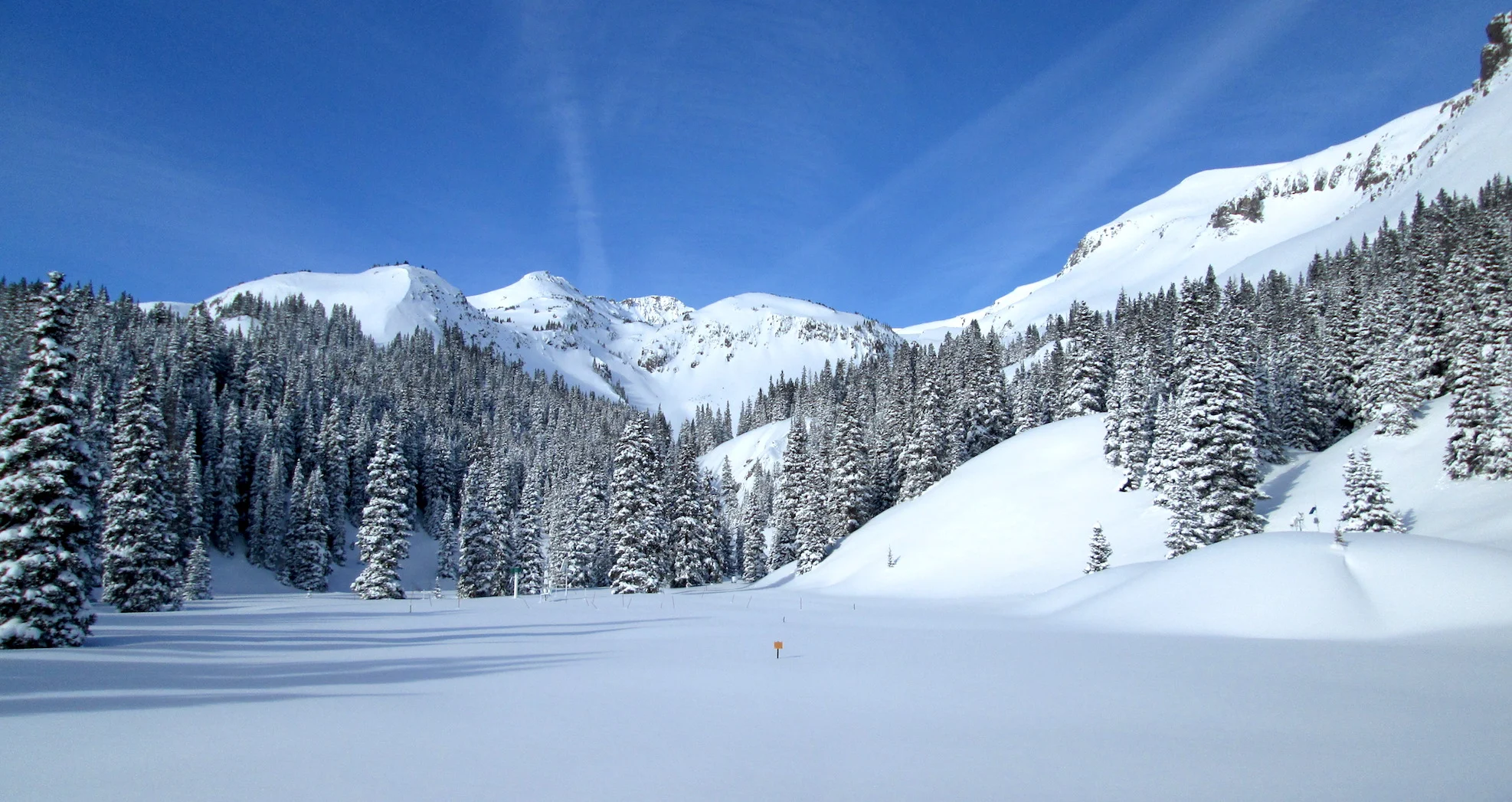April 29, 2019: Significant Dust, PreCIP in forecast, then warm up this weekend
Greetings from Silverton,
As we reported a few days ago dust event #3 (D3) has surfaced in the San Juan Mountains. The dust is easily visible on the snowscape particularly where loose sloughs have exposed the clean snow underneath. So far this season we have received three dust-on-snow events, the first two light and the third moderate in severity. “Moderate” meaning we have observed more severe events in our 15 years of data collection, and more light events. But moderate does not necessarily imply a moderate influence on snowmelt. The conditions are in place so that this dust will have significant impact. D3 is severe enough to strongly alter albedo, hence snowmelt and, being at the surface of snow, will enhance snowmelt the duration of ablation season - and there is a lot of snow to melt. Especially when this layer merges with other dust layers at the surface of the snowpack. Dust event #2, having consolidated and now easily visible in snow profiles, is currently ~19” below the snow surface at SASP. Once these two layers merge dust severity at the surface of the snow will be increased notably.
And not just Southern Colorado, the storm that brought dust to the San Juan Mountains on April 9-10 also took some of that dust north. We have received reports of dust at Grand Mesa, light dust at Loveland Pass, and significant dust having emerged in the Collegiate Mountains on Thursday and currently only thinly covered.
The snowpack at SASP (11,060’) is now isothermal, 0 degrees Celsius throughout, with the top 19” (down to D2) of the snow being wet snow. The mid portion of the pack is moist, and the bottom 32” is wet as well. So we are in the ripening phase of the snowmelt process, where meltwater is retained in the snowpack pore space, when the snowpack cannot retain any more water the snowpack will be “ripe” and we’ll see increased water output. Besides a brief pause for many stream gauges from April 20-24, most streams have been spiking upwards to double median flows for this time of year.
Currently it is overcast and snowing in Silverton. The forecast calls for favored areas in Southern, Central, and Northern Colorado receiving at least ~8” of snow by late Monday night. Snow levels are expected to be near 9,500’ in Northern Mountains and 10,000’ during the day towards the South Mountains and dropping to 9,000’ by Monday night. Unsettled weather continues through the week with temperatures expected to stay below normal. A ridge moves in for the weekend, the atmosphere will dry out and usher in warmer temperatures. Streamflow will likely level off or decrease until later in the week when sunnier conditions return. Higher elevations will likely see an albedo reset with new snow accumulation.
We begin our CODOS tour today and intend to have a state-wide report of dust-on-snow conditions by end of the week.
Below: Dust on the landscape looking up towards Swamp Angel. This is a typical picture of the presence of dust on the snow surface in the San Juan Mountains.
Below: With dust emergence, albedo dropped below 60% for the first time this season. With precipitation falling currently and in the forecast, an albedo reset should be maintained this week (i.e higher albedo). Come this weekend temperatures will climb and warm/dry conditions return, and albedo will likely degrade quickly. Now that we are in spring added precipitation is either rain or wet snow and melts quickly, exposing dust usually within a few days. Also, notice how albedo resets are more pronounced at SBSP (12,200’) compared to SASP (11,060’) this time of year, important to consider as the season progresses and contributions from different elevations of the watershed is parsed out.
Below: Maximum and minimum temperatures will take a dip with the incoming inclement weather, then expected to climb by the weekend. The Senator Beck stream gauge has malfunctioned and a replacment hopefully will be in place within ~10 days.
Below: WY2019 best compares with WY2005 and WY2008 in terms of SWE at SASP and dust classification. Although at SBSP (12,200’), WY2019 is more in-line with WY2011 in terms of SWE.







